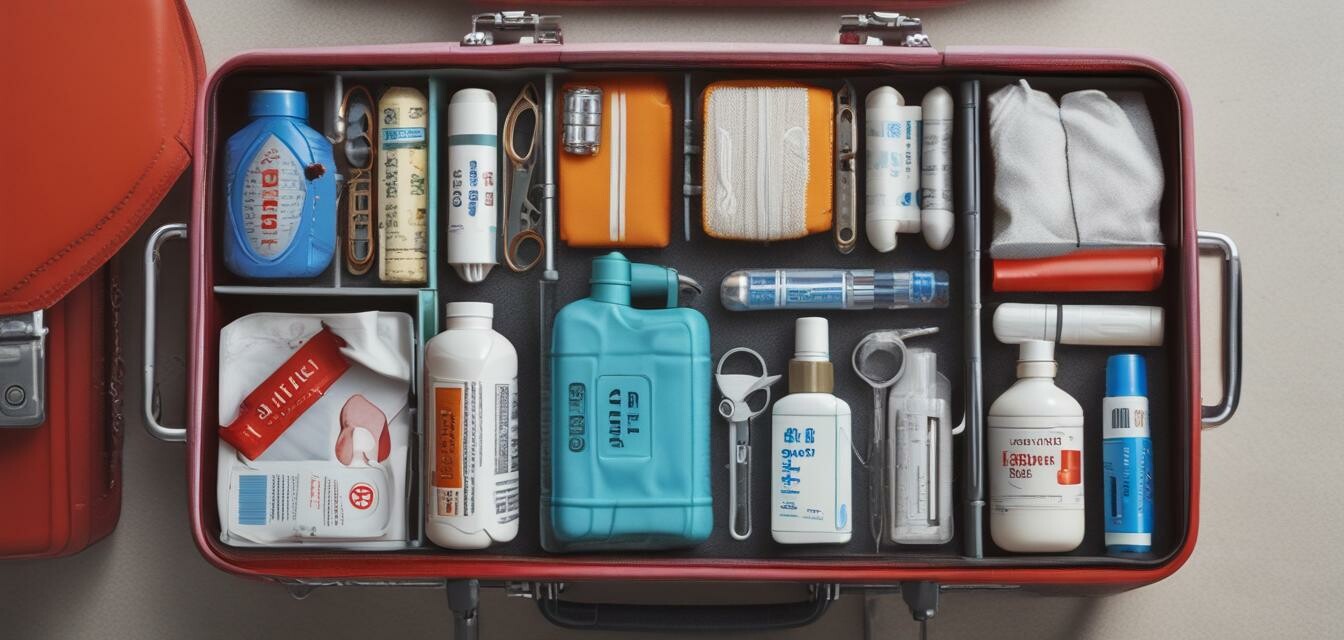
How to pack a first aid kit in your luggage
Key Takeaways
- Include essential first aid items in a compact kit.
- Choose a durable, lightweight pouch or bag.
- Organize items efficiently to save space.
- Consider specific needs based on travel destination.
- Always check your kit before traveling.
When you're traveling, it's essential to be prepared for unexpected situations, especially when it comes to health. A well-packed first aid kit can make all the difference in ensuring you are ready for any minor injuries or ailments. This guide will outline the essential items needed for a travel first aid kit and provide tips on how to pack it effectively into your luggage.
Essential items for your travel first aid kit
Before packing your first aid kit, it's crucial to understand what items are necessary. The following table lists essential supplies to consider:
| Item | Purpose |
|---|---|
| Adhesive bandages | To cover small cuts and abrasions. |
| Antibiotic ointment | To prevent infection in minor wounds. |
| Gauze and tape | For larger cuts or to hold dressings in place. |
| Pain relievers | For headaches or discomfort. |
| Allergy medication | To manage allergic reactions. |
| Anti-nausea medication | For motion sickness or nausea. |
| Thermometer | To check for fever. |
| Scissors | For cutting tape or gauze. |
| Disposable gloves | To maintain hygiene while treating wounds. |
| Hydrocortisone cream | To reduce itching and discomfort from rashes. |
How to pack your first aid kit effectively
Now that you know what to include, it's time to pack your first aid kit efficiently. Here are some practical tips:
Tips for packing your first aid kit
- Use a compact, waterproof pouch or bag to keep your items organized and protected.
- Group similar items together (e.g., bandages, medications) using smaller zip-lock bags or pouches within the main bag.
- Label your items, so you can quickly find what you need in an emergency.
- Check the expiration dates on medications and replace items as needed before every trip.
- Consider any specific health needs based on your destination—this may include altitude sickness medications or insect repellent.
Space-saving techniques for travel
Traveling often requires making the most of your luggage space. Here are a few strategies to save space while packing your first aid kit:
- Roll items: Instead of folding items, roll them to fit more efficiently in your bag.
- Use a pill organizer: Transfer tablets and capsules into a small, labeled pill case to save space.
- Share supplies: If traveling with others, share items like scissors or ointments to reduce redundancy.
When to use your first aid kit
Knowing how to use the items in your first aid kit is just as important as having them. Here are situations when you might need to access your kit:
Pros of having a travel first aid kit
- Provides peace of mind during travel.
- Enables prompt treatment for minor injuries.
- Can prevent minor issues from turning into major problems.
- Encourages self-sufficiency and preparedness.
Cons of having a travel first aid kit
- May take up luggage space if not managed well.
- Requires regular checks and updates.
- Could lead to extra weight if overpacked.
Final thoughts
Packing a first aid kit in your luggage is a simple yet impactful step that ensures you're prepared for anything during your travels. By including essential items and packing them efficiently, you can travel with confidence. For more travel tips, check out our Travel Tips category, where you'll find practical advice for all your adventures.